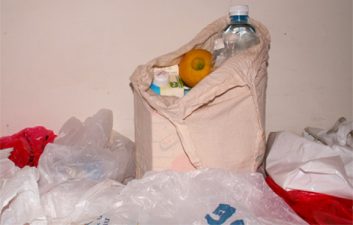Want to know the best place to cloud-gaze in Canada, how to recycle bottles in Berlin, or where you can climb into a treehouse in Tel Aviv? The Green Map System gives us another way of looking at our world — and the movement is starting to take hold in Israel. (See our last post on Green Maps in Israel here — there’s also a video).
Green Prophet wants to tell you more about Green Maps, in the hopes that more can be created around Israel:
The Green Map System, founded in 1995, gives us another way of looking at our world. It is a global word-of-mouth database, which can help us locate and take note of green, sustainable components in our communities.

The system doesn’t just map out the streets, shopping malls and points of historical significance deemed worthy by our governments.
Instead, it provides a self-portrait of cities and communities: functioning as a way for individuals to document places of ecological importance and value.
At the same time, it gives community members the forum for promoting issues and concerns that are otherwise being overlooked.
On such a map, you could read that in Tel Aviv, Revital’s favourite spot is under a one-hundred-year-old Eucalyptus tree in the Neve Zedek neighbourhood. Knowing this, another member of the community who lives across the street from the tree, could notify the mapmaker, a volunteer overseer of a local map, that construction plans for the area threaten to have the old tree cut down.
With such a rapid exchange of information, it gives people the ability to take social action quickly and collectively.
“Understanding the ecological status of our planet today is too overwhelming for most people, but the condition of our cities and towns is more readily grasped and changeable,” says Wendy E. Brawer, the founder and director of Green Maps.
Thanks to the remarkable efforts of the local Green Map makers, she says, more people are getting involved with their community’s environment, and visitors are finding great green initiatives to take back home.
She adds, “The pathway to community well-being is made of millions of small steps taken by individuals along with policy changes by government, businesses, schools and other institutions.”
To view the maps, one simply logs on via the online address www.greenmap.org. The maps can be been used by seniors looking to home-buy in the quietest part of Manhattan; they can be used by mothers looking to educate the newest generation – their children – on green issues in the local community.
Green Maps has given one mother, Lefidus Malau in Jakarta, Indonesia a new way to introduce her neighborhood to her son, she writes.

But whether you are in Jakarta or in the Swiss Jura, the maps take into account your local culture, as they are after all, built by people who are part of the community. This makes a map particularly relevant to each community’s needs.
As an example, the where-to on buying the new Levis organic jeans in a remote Zimbabwean town may be less important than mapping out where soil erosion or animal poaching is happening.
“Each map reflects a different pattern of real-life sustainability, as seen through the eyes of the designers, students, planners, city employees, NGOs, entrepreneurs and cartographers who have created them,” notes Brawer.
“Essentially, I wanted to make a green product for urban living that was both green in its message and its materials. Instead, I led the development and expansion of an adaptable product-service system that ‘works’ in many different situations, in both urban and rural areas. It’s been an extraordinarily fulfilling project.”
Eleven years in the making, Green Maps now covers 350 cities and towns in 47 countries.
“It’s a thrill to have helped to seed and nurture each one,” Brawer adds.
Today’s growing collaborative map project was hatched from Brawer’s plan to make a green map of New York back in 1992. Called the Green Apple Map of NYC, it was a guide to all the sustainability sites for visitors in the city.
“It turned out to be very useful for residents too,” she notes. “Maps are an ideal medium, as they are resource-efficient, universally understandable, portable and have the power of personalizing place. They help people find themselves within.”
Some of the more common points one will see on a map are earth-friendly sites, such as wildlife reserves, urban ecology adventures, where to recycle, gardens, parks, and ecological exhibits.
“The foundation of the [Green Map] system is a living language of icons that identify everything from star-gazing sites to toxic dumps. With every new region, the lexicon grows,” notes the notorious activist magazine Adbusters.
As for where Green Maps will grow in the future, Brawer has already started planning a Green Map Greenhouse. It is an online structure that will preserve, present and cultivate our local-global work, she says. “It will feature a locally-authored webpage for each Green Map project, great search and feedback resources, overarching maps, calendars, albums and lists.”
The expansion will permit much greater public awareness, Brawer believes, and will help free up some of her time to focus on creating more cross-community collaborations.
So whether you are looking for an urban adventure or are hip to protecting Mangrove forests in Singapore, chances are a very good place to start is with a Green Map. And if a map doesn’t yet exist for your region or city, contact Brawer on how to start Green Mapping in your environment.
(This article was first printed in www.eolife.org)





Surely human kind need to think about their own future on earth.